Are you pouring resources into startup ideas that just don't pan out? What if there was a way to launch your product with minimal risk while maximizing the feedback you receive? The answer is to build an MVP first.
And this page is the right place to learn about MVP development. Since 2007, Greenice has been guiding clients in creating MVPs that often evolve into full-scale products. Our expertise spans educational platforms, travel services, job boards, and marketplaces, with continued support and enhancements to ensure their success.
In this article, we explain how and why to build an MVP, how to do this fast and efficiently, and how to avoid common mistakes.
What is a Minimum Viable Product
The term “MVP” was created in 2001 by Frank Robinson, Steve Blank, and Eric Ries.
A Minimal Viable Product (MVP) is a simplified version of the product with only essential features that bring maximum value to the customers. The main purpose of an MVP is to launch a working prototype of the product quickly and receive feedback from the target audience. It allows the creator to learn if the idea works before too many resources are wasted.
Basically, an MVP is a combination of essentials that can satisfy customers. The key is to make this simple product truly “viable.”
.png)
If you are still not sure that you understand MVP, look at these famous examples:
- Facebook: Starting as a simple directory with photos and basic user information for Harvard students, Facebook has grown into a colossal, multipurpose social platform that significantly impacts society.
- Amazon: Initially launched in the 90s as an online bookstore, Amazon capitalized on the emerging trend of internet startups. It has since evolved into a massive retail giant that sells everything from everyday household items to sophisticated software.
- Tripadvisor: Beginning with a basic website that offered information from guidebooks and a button for user-generated reviews, Tripadvisor has expanded into a leading travel platform where users can read reviews and book accommodations.
- Spotify: Starting solely as a music streaming service aimed at combating music piracy, Spotify has continually added new features. Today, it is not just a platform for streaming music but also a hub for listening to and sharing podcasts.
The main takeaway here is that you will start small but your product still needs to be serving a purpose.
Benefits of an MVP solution
Up until you launch your product in the real world for real customers, you are living in fantasy land. So the faster you get real, the better. Creating an MVP instead of a complete product is the way to go. With the help of MVP you can:
- launch faster
- test the hypothesis
- collect users’ feedback
- reduce development time and cost
- attract investors
- reduce financial risks
- check the product’s potential
- find and fix weak points
- save money
- create a product that the market needs and has a sizeable target audience
- attract early adopters
Launching an MVP is not only beneficial, but it’s also flexible - there are several different types to match your needs. From one that don’t require developing an actual product at all, to one with just a single feature.
How to build an MVP, step by step
Here is your algorithm for building MVPs:
- decide on your business model
- formulate your hypothesis
- prioritize features
- learn from feedback
- pivot or persevere
Now, let’s look at every step in detail.
.png)
1. Decide on your business model
“The reality is that, in some ways, the full thing is this really awesome idea in your head that you should keep in your head, but it should be very, very flexible, because it might turn out the full thing that you wanna build isn't what your customers want at all. So, I have this saying: ‘Hold the problem you're solving tightly, hold the customer tightly, hold the solution you're building loosely.” - Michael Seibel, Y Combinator Managing Director.
What problem will your product solve? Who will buy your product? What solutions do your competitors offer? Creating a Business Model Canvas can help find answers. It consists of 9 blocks that are vital for any business:

- Customer segment - Who are the customers? Why would they buy your product?
- Value Proposition - Why would customers choose you over the competition? Think about elements such as customer pain points, jobs, your services and solutions? What is your Unique Value Proposition?
- Channels - How you reach customers and how customers communicate with you and receive your product (e.g. physical and digital channels)
- Customer relationship - How can you maintain and improve relationships with your customers (personally or with automation)
- Revenue streams - How will you market your product? (freemium model, licensing, subscription, or direct sales)
- Key resources - What do you need to deliver your value proposition? (intellectual property, physical assets, finances, human capital)
- Key activities - What areas are essential to bring value to customers (e.g. marketing for customer acquisition, app development for technology-driven companies, design and manufacturing for physical products)
- Key partners - Who can help you leverage your business model (e.g.joint ventures, non-equity strategic alliances)
- Cost - How much it will cost to realize this business idea and run this business model (e.g. fixed or variable costs).
You answer every question with approximations because you don’t know the exact answers yet. Afterwards, you will have a general picture of how your business idea works.
2. Formulate your hypothesis
After you have completed your Business Model Canvas, you can imagine how users will interact with your product. Now you need to test these hypotheses to understand if they are worth developing. To foresee possible challenges divide each hypothesis into 3 risk categories:
- desirability - Is the proposal attractive / interesting?
- viability - Is the problem worth solving?
- feasibility - Will it deliver the value proposition?
This will identify the greatest threats. If your hypotheses don’t give promising results, your product may not be desired by customers or can’t be built at all. In this case, you need to get back to step 1.
3. Prioritize features
What functionality is vital for your product and what is secondary? To decide what features must be developed first you can use the following strategies:
- Story mapping - Organize user stories by arranging cards with workflow written on them according to their importance. Learn which features are the most significant and work on their release first. Cards (or sticky notes) are usually placed on the wall or floor. The team agrees upon the primary steps of the user journey and then creates hypothetical individual user stories beneath these steps. In this way, you will see how users will interact with your product.

Story mapping example - Opportunity scoring - Measure and rank opportunities according to their importance and customer satisfaction. You need to list your product features, and ask customers’ opinions on them. There are two questions: ‘How important are the features, and how well are they realized.’ Users answer using a 5-point scoring system.
Important features that are not satisfactorily realized yet are development opportunities. Features with low importance and satisfaction can be ignored. Usually, importance and satisfaction are equally significant, but importance may have much higher significance. You also must pay attention to user motivation. This outcome-driven-innovation (ODI) strategy was created by Tony Ulwick and works especially well for innovative features.

- Value vs. complexity quadrant - A matrix of features used to compare the business value to implementation complexity. You need to place the feature in the matrix at the intersection of its relative value and its complexity. It will show what brings maximum value with minimum effort, aka low-hanging fruit.

Having decided what features are absolutely essential, develop your MVP and test it in the wild.
4. Learn from feedback
“So, we need to learn fast, yet also release with confidence. It's understandable that many people might naturally view these two difficult goals as at odds with each other. We are in a big hurry to push something out to ln what works and what doesn't. Yet, we don't want to release something that's not ready for prime time and risk hurting our customers and damaging our brand.” - from ‘INSPIRED’ by Marty Cagan, Partner at Silicon Valley Product Groupear
After testing the product and gathering feedback, you need to analyze the data. Was your idea successful? Did it attract users? Which features were efficient? Which can be deleted? What needs to be added? This information will be available from users’ feedback (from interviews, polls, or reviews) or from metrics received after the launch (number of downloads, customer acquisition cost, liquidity).
Learning about the performance of your product after each iteration leads to making a decision - pivot or persevere.
5. Pivot or persevere
The “pivot or persevere” strategy is rooted in the Lean Startup method. Depending on the users’ feedback you will need to change your product (pivot) or continue tweaking the current version (persevere). If customers like your product - well done! Persevere moving in this direction, applying minor adjustments. But if customers are not satisfied then it’s time to pivot. Here are 10 of Eric Ries’s change strategies:
- zoom-in pivot - focus on a non-essential feature that resonated with the audience
- zoom-out pivot - come up with a different feature because the current one didn’t work well
- customer segment - change from the expected target audience to a different set of customers who were turned on by your product
- customer need - adapt a product to a new problem which is more suitable for the customer segment
- platform - go from application to the platform or vice versa
- business architecture pivot - change business type (e.g. from B2B to B2C model)
- value capture pivot - change monetization strategy
- engine of growth pivot - change popularization strategy (through virality, engagement, or number of paying users)
- channel pivot - change the channel to deliver the product to users (e.g. from selling via a mediator platform to selling directly to customers)
- technology pivot - change the way to solve the problem (e.g. streaming instead of selling DVDs)
The first 5 of these strategies are the most popular, but you can choose any that work for you. After “corrections” are made, you need to repeat the cycle and have as many iterations as it takes to create something awesome.
AI MVP development: How it changes the game
AI has the potential to improve the Minimum Viable Product development process on each stage, offering enhancements that can accelerate time to market and improve product fit. This includes popular tools like ChatGPT, Claude, and Gemini, as well as more specialized solutions tailored to specific needs. These tools help streamline tasks and generate valuable insights quickly.
Market research:
AI enhances market research by analyzing vast data from various sources to identify trends, consumer preferences, and market opportunities. It uses natural language processing and machine learning to efficiently process data from social media, forums, and reviews, providing faster insights than traditional methods.
Here are few use cases:
- Customer persona development: Tools like SparkToro analyze online behavior, while Humantic AI creates detailed personality profiles for targeted marketing.
- Trend analysis and market forecasting: Exploding Topics identifies emerging trends, and Crayon provides competitive intelligence, helping businesses anticipate market shifts.
- Competitor analysis: AI tracks competitors’ activities and updates. Crayon and Kompyte offer detailed tracking, while Semrush and Ahrefs analyze SEO and ad metrics.
- Sentiment and voice of customer analysis: Tools like MonkeyLearn classify text for sentiment analysis, and Lexalytics and Chattermill provide advanced feedback analytics.
- Survey analysis and data summarization: AI like Typeform + GPT via Zapier summarizes survey data instantly, and Qualtrics XM enhances survey analytics with AI.
- Product-market fit exploration: Tools such as Delighted or Survicate assess customer feedback to determine product-market fit efficiently.
- Keyword and content gap research: AI identifies underexplored topics for content strategy. Combining ChatGPT with Ahrefs or SEMRush optimizes keyword strategies, while SurferSEO offers AI-powered content planning.
Planning:
During the planning stage, AI streamlines project management and enhances strategic decision-making by providing deep insights into market demands, competitor strategies, and user preferences.
Here are few use cases:
- Feature prioritization: AI tools analyze market data and customer feedback to identify features that are likely to engage users and meet market needs effectively. Tools like Pendo and Amplitude offer data-driven insights, helping to prioritize features that maximize value and resource allocation.
- Competitive analysis: AI continuously monitors and evaluates competitors, providing updates and strategic insights. This helps businesses stay ahead by adapting their products based on real-time market trends. Tools such as Crayon and Kompyte deliver comprehensive analytics on competitor movements and strategies.
- Project management and timeline forecasting: AI-driven tools like Monday.com and Asana utilize historical data to predict project timelines and resource requirements, ensuring projects are completed within deadlines and budgets.
- Budget optimization: AI platforms like Kissflow Project and Zoho Projects analyze financial data to forecast costs and optimize spending, aligning budget allocations with project goals and expected returns.
Development:
AI enhances the Minimum Viable Product software development by automating routine coding tasks, generating code from descriptions using tools like GitHub Copilot, or creating interactive prototypes based on textual inputs.
Here are few use cases:
- Automated coding and code generation: Tools like GitHub Copilot speed up development by automating routine coding and generating code from descriptions. This tool provides real-time code suggestions, boosting productivity and reducing errors.
- Interactive prototype creation: AI rapidly converts textual descriptions into interactive prototypes. Tools such as Balsamiq and Adobe XD auto-layout UI elements based on user stories, allowing quick visualization and iterative adjustments.
- Bug detection and code reviews: DeepCode by Snyk uses AI to preemptively detect potential bugs and vulnerabilities, offering fixes in real time to enhance code quality and security.
- Optimization suggestions: Kite employs machine learning to suggest code optimizations, improving the MVP's performance and maintainability.
- Language and framework translations: Google's TransCoder assists in translating code across languages like Java, C++, and Python, facilitating code reuse and consistency across different technology stacks.
Marketing:
In the marketing phase, AI enhances campaign effectiveness by personalizing interactions and optimizing expenditures.
Here are a few use cases:
- Personalized campaigns: AI tailors marketing efforts to individual preferences by analyzing customer data like past purchases, browsing behavior, and demographics. For instance, Salesforce Marketing Cloud segments audiences to deliver customized content at the most effective times, boosting conversion chances.
- Dynamic ad spend optimization: AI algorithms adjust ad budgets in real time, ensuring funds are allocated to the most effective campaigns. Google Ads employs machine learning to optimize bids and manage budget distribution, maximizing return on investment.
- Predictive analytics for buying behavior: AI predicts future buying patterns using historical data, allowing marketers to proactively align campaigns with customer expectations. IBM Watson Marketing uses these analytics to foresee and adapt to customer behaviors, crafting preemptive, targeted campaigns.
- Real-time marketing adjustments: AI continuously evaluates campaign performance and can suggest or implement real-time strategy adjustments based on engagement and conversion data. HubSpot, for example, analyzes data across emails and social posts, optimizing content timing and adjustments to improve engagement.
- Content optimization: AI analyzes content performance to recommend topics and optimize SEO strategies. MarketMuse assesses existing content and competitor data to suggest content enhancements and new topics that are likely to succeed.
- Customer journey mapping: AI tracks and analyzes the customer journey, identifying critical intervention points to improve conversion rates. Adobe Experience Platform integrates various data sources to map out customer interactions, providing valuable insights for optimizing each touchpoint.
Analytics:
Once the MVP is launched, AI becomes crucial in analyzing user interaction data to provide actionable insights, pinpoint areas for improvement, and forecast future behaviors, enhancing both marketing strategies and product development.
Here are few use cases:
- User behavior analysis: AI tools like Mixpanel assess how users interact with the MVP, identifying behavior patterns and potential drop-off points to suggest enhancements or new feature opportunities.
- Predictive user behavior modeling: AI utilizes historical data to predict future user actions. Pendo, for example, employs predictive analytics to help businesses anticipate user needs and proactively refine the MVP, enhancing user satisfaction.
- Conversion optimization: AI analyzes conversion paths to identify optimal strategies for converting visitors into customers. Optimizely automates the testing and optimization of these paths, using AI for A/B and multivariate testing to improve conversion rates.
- Sentiment analysis: AI evaluates user feedback across reviews and social media to assess sentiment. MonkeyLearn processes text to extract customer sentiments, offering insights into public perception and areas requiring attention.
- Churn prediction: AI detects patterns leading to customer churn, allowing preemptive action. CleverTap integrates AI to identify users at risk of churning and initiates targeted campaigns to enhance retention.
- Performance benchmarking: AI tools like Tableau use advanced analytics to benchmark performance against industry standards or past data, identifying both strengths and areas needing improvement.
- Automated reporting: AI streamlines report generation, condensing vast data into concise insights. Google Analytics leverages AI to produce detailed reports that analyze user segments and traffic patterns, informing data-driven decisions.
3 ways to build your MVP
Based on MVP development services we offer at Greenice, the process can be approached in several efficient ways, each tailored to different needs and stages of validation:
Clickable prototypes & POCs:
This method is based on using AI tools that can significantly speed up the process of creating interactive prototypes or Proof of Concepts (POCs). These tools allow for quick assembly of clickable prototypes that are interactive, giving stakeholders a real feel of the intended product functionality and design early in the development process.
Pros:
- Speed: Rapidly transforms ideas into testable forms, reducing time to feedback.
- Cost-effective: Minimizes upfront investment before confirming product viability.
Cons:
- Surface-level interaction: May not fully capture the complexity or backend functionality.
- Limited testing: Provides limited insights into performance under real-world operational conditions.
Example: We developed a prototype that collects car-related data using an AI tool, which allowed us to present a functional version in just two days. This rapid prototyping enabled immediate stakeholder feedback and quick iterations.
White-label MVP solutions:
This method implies utilizing pre-built platforms which can be incredibly cost-effective. These platforms come with pre-written code scripts that can be customized to suit specific business requirements. This approach reduces development costs while maintaining a high degree of flexibility, allowing for tailored functionalities without the need to build from scratch.
Pros:
- Reduced development time: Faster deployment since the core functionality is already developed.
- Cost savings: Less expensive than developing all features from scratch.
Cons:
- Less differentiation: Might not offer as unique a solution as fully custom development.
- Dependency: Reliance on the base platform’s limitations and update schedule.
Example: For our project Welcome Saudi, a website specialising in traveling, we utilized a pre-built Laravel platform which helped us quickly deploy a comprehensive travel platform. Using pre-written code, we were able to launch faster while still accommodating specific customizations.
Custom MVP development:
This method involves a detailed process of defining the right features that directly address core user needs and then developing a custom MVP from scratch based on these specifications. This approach ensures that the MVP is perfectly aligned with the strategic goals of the business, providing a solid foundation for further iterations and enhancements.
Pros:
- High customization: Tailored specifically to business needs and user expectations.
- Competitive advantage: Offers unique features that stand out in the market.
Cons:
- Higher costs: More expensive due to the need for bespoke development.
- Longer time to market: Takes more time to develop due to the complexity and customization involved.
Example: For BizSaleByOwner, the platform that helps sell businesses, we started by developing a basic website that listed businesses for sale. This approach allowed us to launch quickly and gather user feedback, which informed later enhancements, including additional marketplace features and consulting services, enhancing the platform’s value and functionality.
Mistakes to avoid
Business is always connected with risk and no one is immune to mistakes. What can go wrong in your MVP development process?

Falling in love with your MVP
So many people fall in love with the vision in their head.
Michael Seibel, Y Combinator Managing Director, emphasizes, "And none of the products I showed you before was the initial vision ‒ what it ended up being. So please don't fall in love with your MVP. It's just step one in a journey. You wouldn't fall in love with a paper you wrote in the first grade.”
Often, startup owners fixate on ideas in their heads, thinking about them as their babies. This fixation can prevent adaptability, crucial for pivoting when necessary. Instead, view your MVP as a dynamic prototype, a starting point that is meant to evolve through continuous improvement and feedback, not as the final destination.
Wrong priorities
Many entrepreneurs focus on the wrong aspects of the product, or believe that everything is equally important, making it difficult to narrow down to what truly matters. This scattergun approach can lead you astray from your MVP's launch, wasting both time and resources on trivial features.
To counter this, employ prioritization techniques such as story mapping or opportunity scoring, which help in distinguishing 'must-have' features from 'nice-to-have' ones, ensuring that every effort is strategically aligned with your core value proposition.
Lack of iterations
It's easy to lose patience or attempt to cram too many features into the initial version of your product. This overloading can exhaust funds before your MVP even reaches the market. Remember, an MVP is not about perfection but about iterative development.
Focus on delivering a simple version that addresses the core needs of a specific segment of your target audience. This segmented approach not only conserves resources but also provides clearer insights into the value your product offers, making subsequent iterations more focused and effective.
Lack of feedback or feedback from the wrong source
Operating without feedback is like navigating without a compass. Not gathering adequate user insights or relying on feedback from irrelevant sources can skew your development direction.
To build a product that truly resonates with your audience, establish a systematic feedback loop. Collect and analyze feedback after each iteration from the right sources—actual or potential users who reflect your target market. This feedback is instrumental in refining your MVP to better meet user expectations.
Late start
The adage “better late than never” doesn’t apply in the fast-paced world of tech startups. Delaying your MVP can mean missing essential market opportunities. There’s no point in creating a website to sell masks after the pandemic is over, is there?
Speed is of the essence. Launch quickly with the essentials to capture market interest and establish a foothold before conditions shift.
Outspending your resources
Overinvestment in the developmental phase can deplete your resources, leaving little for iteration and market entry. To prevent this, prioritize crucial features that offer the most significant value with minimal complexity.
Launch with a basic, functional version of your product to test the market. This strategic simplicity ensures sustainability, allowing you to invest in expansion as your product gains traction and proves its market worth.
Irrelevant problem
Some startupers focus on ideas that are not viable. The problem might be insignificant and doesn’t need solving. It also might already have a solution and their product can’t offer anything original.
Avoid being a copycat product by conducting a thorough market analysis to identify genuine gaps or unsolved pain points. Innovate within these spaces to introduce unique solutions that distinguish your product from competitors.
Striving for perfection
Perfectionism can be the enemy of progress. Accepting that your MVP will not be flawless allows you to launch faster and iterate based on real user interactions rather than assumptions.
Adopt a phased approach where each feature is rolled out incrementally, tested, and refined based on user feedback. This strategy not only mitigates risks but also enhances product-market fit over time.
Tips to get your MVP off the ground faster
Knowing how to develop an MVP is useful, and knowing what problems to avoid when doing so is vital. Here are the most valuable practices:

Fixed time, variable scope
This concept is taken from “Shape up” by Ryan Singer of Basecamp. The idea is that every project should have a specific deadline, while the approach to development should remain flexible. Limited time makes the team focus on important things instead of stretching the process out. Avoiding strict frameworks, at the same time, leaves room for inspired, agile, creative work.
Build, measure, learn
The main goal of an MVP is to test the idea and collect the knowledge necessary to improve the next version of the product. The key is to constantly iterate, making the product better every time. Basically, the team develops an MVP not to create a prototype, but to learn the most they can. You build the product iteration, measure how well it works, learn how to improve it, and repeat.
Right team
Hiring experts and getting the team aligned and on the same page is vital. You should introduce design, engineering, and marketing from the inception of your project. It will help to create a working prototype that will work properly, look good, and smoothly enter the market. If you don’t have your own developers and struggle to find your own team it’s a great idea to hire a highly-skilled development company. Outsourcing will not only speed up the development, but it will also save money. Moreover, teams from Eastern Europe offer high-quality services at a price that won’t break your budget ‒ they can be more than three times less expensive than those in North America. Development teams in the US cost $150/hour while those in Ukraine may cost $40/hour.
What to measure after the launch
After launch, you need to measure how your product is doing in order to learn what to change. First of all, you need to get as much quality feedback as you can via interviews, surveys, and focus groups. This will provide you with a pool of ideas for what you can do with your product. In addition, you will need quantitative data to justify these ideas.
The choice of metrics you use to measure the effectiveness of your product will change depending on whether you have an app, a SaaS solution, or a marketplace. Below are some examples of what you might measure.
Metrics for a mobile app or SaaS product:
- Number of downloads - This shows how popular your app is and how good the marketing campaign is.
- Active users - a proportion of daily active users (DAU) to monthly active users (MAU) based on app login or another important activity. This shows user engagement. Over 20% of active users is a good result.
- Paying users - correlation of unique paid users on a certain date to the total number of users who installed the app during this period.
- Average revenue per user (ARPU) - Ratio of the total revenue to the number of users.
- Churn rate - For apps and products with recurring payments, this shows the percentage of users who unsubscribe or uninstall the app over time. If many users leave the subscription, the product won’t be profitable.
- User ratings - These reflect users' opinions and help understand what features people like and dislike. They can also suggest improvement. The feedback is usually left on the app marketplace or third-party review websites. High ratings promote further downloads of your app.
- Customer acquisition cost (CAC) - The sum of costs to acquire new users divided by the number of users acquired over a specific period. Indicates your marketing performance and efficiency of development efforts.
- Customer lifetime value (CLV) - Total revenue the user generates during the life of the app. This can be calculated based on user transactions over a certain period. Unlike ARPU, CLV includes both the direct value (e.g. subscriptions, in-app purchases, ad impressions) and the indirect value (e.g. how many users the customer refers to your app)
Metrics for a marketplace:
- Size - the scale of the marketplace. This includes Gross Merchandise Value (GMV), take rate, and contribution margin.
- Shape - fragmentation / concentration of the marketplace. This includes the number of active buyers and sellers, GMV of a specific number of top buyers and sellers, and the percentage of monogamous transactions.
- Liquidity - level of marketplace effectiveness. This includes the number of transactions, match rate, and time needed to match.
- Acquisition - data about user attraction. There are different indicators for B2B and B2C marketplaces. For B2B, they are the percentage of inbound leads, conversion rate at every stage, number of qualified leads, sales cycle length, and CAC. For B2C they are the percentage of organic traffic, cost per acquisition (CPA), the conversion rate of traffic, and CAC.
- Retention and engagement - This shows how much users enjoy using the marketplace. This includes share of wallet, users returning by cohort, number of repeated transactions by cohort.
- Unit economics - indicators of business health. This includes Lifetime Value (LTV), CAC payback, and LTV to CAC ratio.
How much does it cost to build an MVP?
Every project is unique, and the price range can vary significantly. Several factors influence the overall cost of developing an MVP:
- Features: The complexity of your MVP's functionality directly affects the cost. More intricate features require more resources and development time, increasing the overall price.
- Technology stack: The choice of technology plays a crucial role in budgeting. While there are cost-effective open-source technologies, some technologies require licensing fees. Additionally, specialists in niche or advanced technologies typically command higher rates than those working with more common programming languages.
- Location of the team: The geographic location of your development team also impacts costs. Teams based in North America and Western Europe generally have higher hourly rates compared to those in Eastern Europe or Africa.
Moreover, the development approach you choose will also affect the pricing. Here are the typical cost influences based on the development option:
- Custom вevelopment: Building a completely custom MVP allows for tailored solutions but often comes at a higher price due to the need for unique coding and extensive testing. The cost starts from $10,000.
- White-label solutions: Utilizing pre-built platforms can reduce costs significantly. While customization is still possible, using existing frameworks speeds up development and cuts down expenses. The cost starts from $5,000.
- Prototyping with AI: Employing AI tools to create prototypes can accelerate the early stages of development, potentially lowering costs by reducing the amount of manual coding and iteration needed. While it's challenging to precisely define the costs for this approach, it is generally more cost-effective, primarily because prototypes can be developed in just a couple of days (or even hours), resulting in significant savings.
Want a precise estimate of your MVP?
Contact UsOur experience
If you are tired of hypothetical cases or the same success stories of the big companies - here are some projects for which we created MVPs.
BizSaleByOwner - a marketplace for selling businesses with consultations from specialists. The client came with a bare idea somewhat similar to Upwork, mainly focused on finding experts to sell businesses. We recommended they begin by launching an MVP where users could place ads to sell their small businesses.
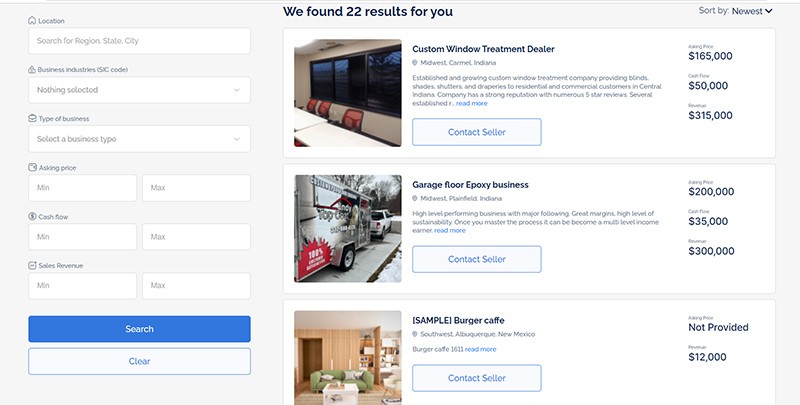
Next, we added a feature for contacting a counselor to assist in buying or selling the business.
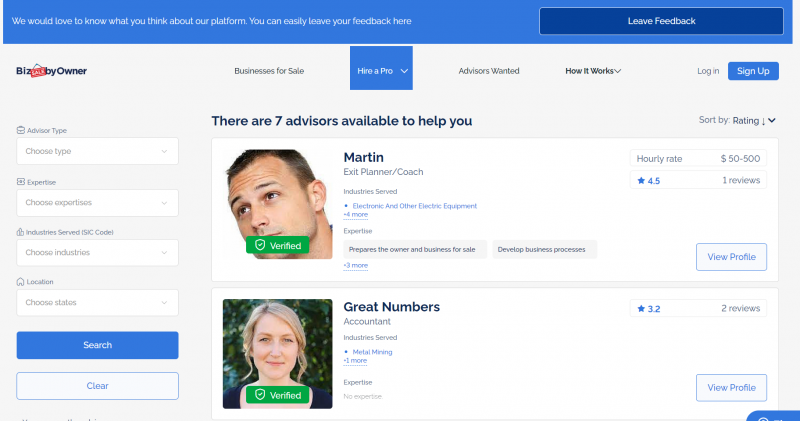
Welcome Saudi - an aggregator of travel destinations in the Saudi Arabia region. The goal was to build a platform like Tripadvisor with monetization from affiliates. The first drawback was that it is impossible to join affiliate programs like Booking or Agoda when the website is new and has little traffic (you need a minimum of 2000 users per month). For the MVP, we took the hotel inventory from open-source HotelBeds. The client also launched a social media ad campaign. These efforts allowed the site to attract enough users to allow them to join a major affiliate program.
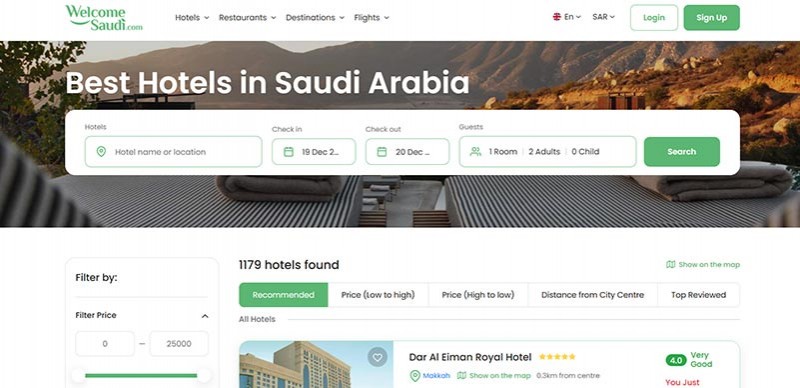
Later, we created a feature allowing hotel owners to add their locations to the website themselves.
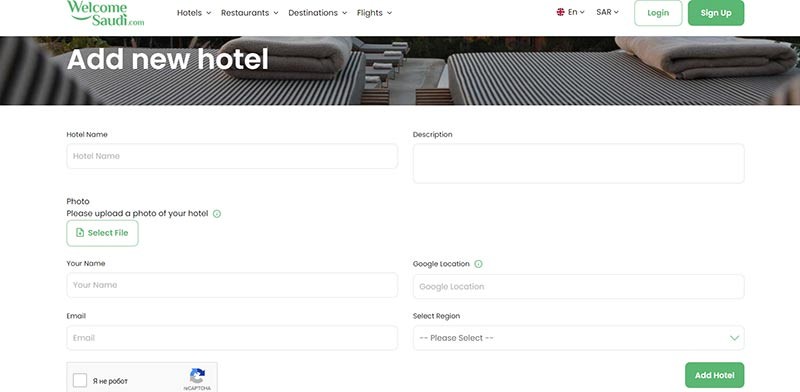
FundaActive - children’s activity and childcare provider. Our client wanted to create a custom product that would solve his management and automation problems. In the process, he realized that his idea could help other organizations solve the same problem, so he decided to turn his product into a SaaS. We helped develop the system with portals for customers (parents), organizations, and admins. We also added multi-tenant architecture to let different companies use the system and have independent databases.
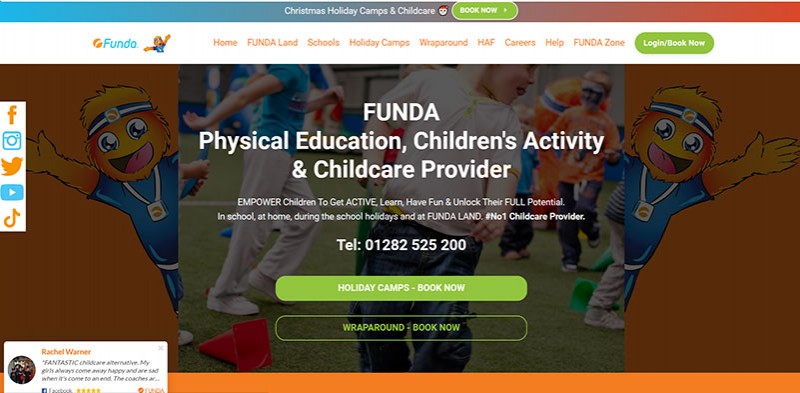
Conclusion
Launching a startup is fraught with risks, and many ideas falter before ever reaching the market. To mitigate these risks, consider starting with an MVP—a streamlined version of your product that focuses on essential features. This approach not only minimizes initial costs but also allows for flexible, responsive development based on real user feedback.
The MVP strategy has been a cornerstone for many successful companies. Industry giants like Amazon and Facebook began as MVPs and evolved into global empires. You can emulate their success by carefully selecting the type of MVP that best suits your business needs.
Throughout this article, we've outlined common pitfalls for startups and provided strategies to avoid them. Armed with this knowledge, you're well-equipped to navigate the challenges of launching a startup.
If you have questions or would like to discuss your business idea further, we're here to help. Feel free to reach out, and let’s schedule a consultation to explore how we can support your entrepreneurial journey.
Ready to start crafting a distinctive Minimum viable product?
Contact UsRate this article!
5







 Sign in with Google
Sign in with Google
Comments (0)